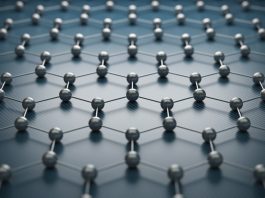A team of researchers have developed a novel method of producing macroscopic crystalline materials out of 34 atom silver-gold intermetallic clusters.
The crystalline material, created by scientist at the universities of Jyväskylä, Finland, and Xiamen, China, has a highly anisotropic electrical conductivity. The crystalline material functions as a semiconductor in one direction and as an electrical insulator in other directions.
Researchers in Xiamen examined the electrical properties of the crystalline material and the research team at Jyväskylä, conducted its theoretical characterisation.
Combining gold, silver and ethynyladamantane
As published in Nature Communications, researchers synthesised the metal clusters by means of wet chemistry. The research team combined gold, silver salts and ethynyladamantane molecules in a mixture of methanol and either chloroform or dichloromethane.
All experiments conducted in this study resulted in the production of the same 34-atom silver-gold cluster with an identical atomic structure. The crystals behaved as a semiconducting material in the direction of the polymer and as an electrical insulator in the cross directions.
“We were quite surprised by the observation that the polymer formation can be controlled by simple means of changing the solvent molecules. We discovered this probably by good luck, but we hope that this result can be applied in future to design hierarchical nanostructured materials with desired functionality”, says Professor Nanfeng Zheng from Xiamen University, who led the experimental work.
Supercomputer modelling
Scientists conducted theoretical modelling of the cluster material by computer-intensive simulations using the density functional theory, which predicts that the material has an energy gap of 1.3 eV for electronic excitations.
The findings of this modelling was confirmed by measurements of optical absorption and electrical conductivity in a layout where single crystals were mounted as part of a field-effect transistor, which showed a p-type semiconductor property of the material. Electrical conductivity along the polymer direction was about 1800-fold as compared to the cross directions.
“This work shows an interesting example on how macroscopic material properties can be designed in the bottom-up synthesis of nanomaterials. Theoretical modelling of this material was quite challenging due to a large-scale model we had to build to account for the correct periodicity of the polymer crystal. To this end, we benefited very much of having access to some of the largest supercomputers in Europe,” commented Professor Hannu Häkkinen from the University of Jyväskylä, who led the theoretical work.









